Wheel Alignment (Garutech Wheel Aligner GTWA-200/300)
What is Four Wheel Alignment?
Since the car was invented it has been important that all four wheels point in the same direction!
Over time as the car and its components have evolved, so has the way cars steering and suspension set up or geometry is measured.
The modern car is built for comfort, performance and handling. In order to achieve and maintain the best ride possible, the steering and suspension needs to be measured and adjusted within the motor manufacturer’s specifications. This can only be done by measuring all four wheels and having a proper full four wheel alignment measurement.
If only the fronts are set straight, through having a Tracking, two wheel alignment, or Toe & Go, and the rear wheels remain out of alignment (and not adjusted), your car could still suffer tyre wear, pulling and crooked steering wheel
If you’re wondering whether your car needs an alignment, first look at your tires. Uneven tire wear — often, more wear on the outside of some tires — is a prime indicator that your car is likely out of alignment. Here are a few more indicators:
your car seems to be drifting to one side, even when you think you’re driving straight
your steering wheel vibrates
you are driving straight, but your steering wheel isn’t centered
If none of these indicators occurs but it’s been a while since your last alignment, check your owner’s manual to see how often the manufacturer recommends having this service.
An out-of-alignment car is a common result of everyday driving. But the term alignment doesn’t really refer to your car’s wheels but rather to the suspension. As part of normal driving, parts of your car’s suspension may become worn, and springs can be stretched out. Even a small accident or bumping a curb can disrupt your suspension, knocking some of the highly calibrated components off-kilter, making your wheels sit at improper angles. An alignment restores these angles to their correct measurements, making sure that your wheels sit straight.
The most visible benefit of an alignment is less tire wear. And when tires do wear down, they’ll do so evenly on a properly aligned suspension. Tires can be quite expensive — easily $100 or more per tire — whereas an alignment often costs $50 to $100, making it a cost-effective procedure that should be part of regular car maintenance [source: Consumer Reports].
An alignment will ensure that your car drives straight and handles properly, making your ride safer. You’ll also get better gas mileage because your tires will be properly aligned with the road, decreasing resistance.
On the next page, we’ll look at what happens during an alignment.
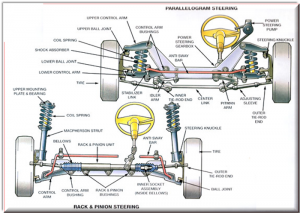
Why does my car need an alignment?
On all vehicles the geometry can move out of alignment, this is commonly known as misalignment. There are several reasons why cars become misaligned:
Through everyday driving, but factors such as kerbing, hitting a potholes etc, can alter it dramatically
Worn suspension parts.
It may have been wrongly adjusted previously.
What are the benefits?
The benefits are numerous and in today’s world should not be ignored.
Reduced Tyre Wear
Improper alignment is a major cause of premature tyre wear. Over the years, a properly aligned car can add thousands of miles to tyre life.
Improved Fuel Consumption
Fuel consumption reduces as the drag on the tyres (rolling resistance) decreases. Four wheel alignment sets the wheels straight/parallel, which along with correct tyre pressures, minimises the rolling resistance.
Saves Money & Environment
By preventing premature tyre wear, early tyre disposal and improving fuel economy/ CO2 emissions, it not only reduces the cost of motoring – putting more money in your pocket, but helps the environment too!
Improved Handling
Many handling problems can be corrected by four wheel alignment, giving you the driver a better and enjoyable driving experience.
Safer Driving
Misalignment will make the car less stable when taking emergency or evasive action. A suspension system inspection is part of an alignment procedure, therefore potentially allows worn parts to be spotted before they cause a a more costly problem.
know if my car wheels are out of alignment?
A good question! it is not always obvious, especially if the misalignment is slight, but there are signs to look out for:
Uneven tyre wear on the fronts or the rears
If you can’t visibly see the wear, run your hands over the tyre and you can soon feel where the rubber has worn excessively, on the inside or outside edges. Warning – Be careful, in extreme cases of excessive wear fine wire may be protruding from the rubber.
The car pulls to the left and right
When driving along a straight flat road and you either need to compensate through the steering to keep the car driving straight the car drifts to the left or right under braking.
A crooked steering wheel
The steering wheel is not straight, even when driving straight.
What is the difference between tracking and four wheel alignment?
Tracking was born of a bygone era, when cars had very little or no adjustment. Any measurement and adjustment tended to be on the front wheels, for the ‘Toe’ angle only. Tracking on the fronts (sometimes called a ‘two wheel alignment’) does not take in account the direction in which the rear wheels are pointing. So if you have the fronts adjusted and set straight, if the rears are out of alignment, the car may pull and tyres could still wear.
In its original sense, Tracking uses gauges (usually the hang-on style) where the operator peers through a ‘scope’ or views a light/laser beam on a scale. This system does not allow for run out compensation (taking account for any errors in the wheel rim), so the reading result can only at best be approximate.
Four Wheel Alignment measures a minimum of 12 angles and compares them to the alignment data specified by the vehicle manufacturer. Wheel rim run-out compensation is taken into account, which gives accurate and repeatable readings. With such accurate readings, Four Wheel Alignment allows toe adjustments of individual wheels which ensure the steering wheel is set straight. Further adjustments of camber, caster and other angles (where necessary) can ensure optimum performance and savings.
On modern cars, tracking alone is unlikely to deliver complete alignment or complete customer satisfaction.
Note – When booking a wheel alignment service, ask about the service you’ll receive. Some outlets use the word ‘Wheel Alignment‘, when actually they only have the capability to offer Tracking?
How often should the alignment be checked?
As a general rule it is wise to have your alignment checked;
Every 12,000 – 15,000 miles or once a year.
However, it is also highly reccomended when;
You knowingly hit a kerb or pothole
New tyres are fitted
Steering and suspension components are replaced
The vehicle has been involved in any form of accident or collision
( If the vehicle as been to a repair centre it may have had the alignment checked – just ask for the printout )
FAQ
Isn’t four wheel alignment just for 4×4?s?
No definitely not. All cars have four wheels and it is important all four are measured, in relation to one another to check they are all pointing in the same direction/ thrust line.
Can the car be aligned with worn tyres – or do I need to fit new tyres first?
New or old tyre fitted will make little difference to the alignment readings.
They will however have a big effect on the way the car feels to drive (even after the alignment has been corrected). Where there was a high degree of misalignment and hence tyre wear present it would be recommended to have new tyres fitted at the time of the alignment adjustments are made.
By having an alignment will my problem always be solved?
Usually but not always. Cars have wheel alignment difficulties through being either out of adjustment (correctable) or by having bent components or even the car body/subframe to which they bolt being bent. How many new parts are needed? Does the car need to visit a bodyshop?
Where adjustments are not possible you will be kept informed and can liase with the Hunter equipped alignment centre as to possible next actions.
Will the alignment shop always have the alignment data for my car?
Generally speaking yes they should, there are enormous amounts of factory issued alignment data available – especially to the Hunter aligner user. On occasions very new vehicles – or some imports, may need the data obtaining specifically for that car. This is very unusual and should not be a problem. Some Hunter sites will have WebSpecs allowing missing data to be found straight away, on line.
My alignment centre advised me that my car needed to be loaded with weights – is this right?
Yes, certain makes and models of cars do need weighting to carry out the alignment in accordance to the motor manufacturer’s settings.
I have had some parts changed on my suspension; does my car need an alignment check?
Yes it will. Any change in parts/components of either steering or suspension will mean the car will need a full four wheel alignment.
Important Note: On certain modern cars to gain access to clutch, or other components, the sub frame needs to be lowered. By doing this will also affect the geometry so it is important when this happens to also have a four wheel alignment.
My car is lowered and I struggle to get anyone to measure it correctly?
A more common query relates to what is the correct alignment data on modified cars or cars where the ride height has been lowered or ‘slammed’.
There is no data – and this is where the skill and interpretation by the alignment operator will assist in finding suitable settings. Often aftermarket adjustment kits are needed. Its fair to say that the optimum settings may not be found completely at the first alignment – and a subsequent revisit after a nominal mileage may be advised to confirm tyre wear is satisfactory/make a further adjustment. Some Hunter alignment centres have ‘WinAlign Tuner’ software that takes out the guess work of settings
I have had my wheels aligned but the tyres are still wearing?
In the most cases, if your tyres were wearing and had a wear pattern ahead of the alignment, they will continue to wear in that wear pattern until replaced with new tyres –even with the alignment correct!
If they were new tyres fitted after the alignment and they are still wearing, may be the wheels have bumped a pothole or kerb since. If the workshop where you had your alignment carried out, did not provide you with a printout of a ‘job well done’ – the wheels may have been adjusted incorrectly? Try a Hunter Alignment Centre that does give you a printout!
If you have a printout, do go back to the Centre and discuss. Be civil as in most cases they will be only too pleased to help find the route of the problem for you.
I have had my wheels balanced and my four wheel alignment checked, but my car is still suffering from vibration and a slight pull?
This may be the case. There is another issue that affects cars called Road Force Variation (RFV) where a hard spot in the make up of the tyre can give a vibration. Also the flexibility in the tyre or Conicity can contribute to a pull on the car called Lateral Force. Very few outlets/workshops are aware of this, but specialists with GSP9700 Road Force Balancer will be able to identify this. You can locate them through.
kindly call Garutech for the latest wheel alignment machine ..
GTWA-300 a wheel aligner from garutech.
courtesy : http://www.alignmycar.co.uk/





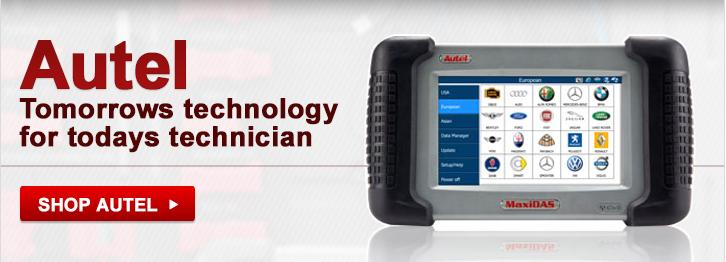



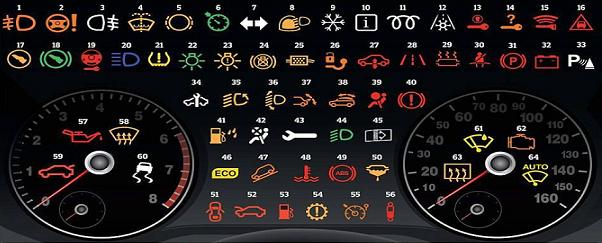
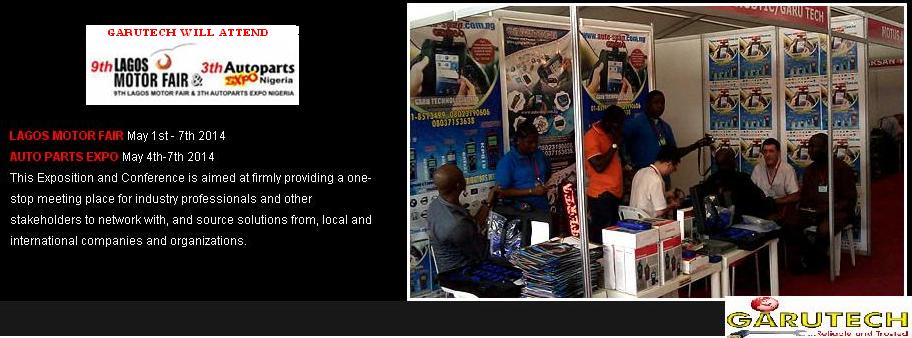

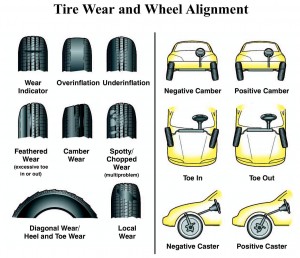
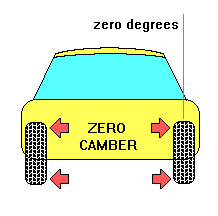
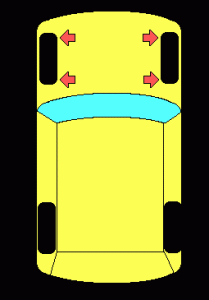
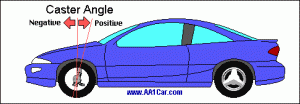



Leave Your Response